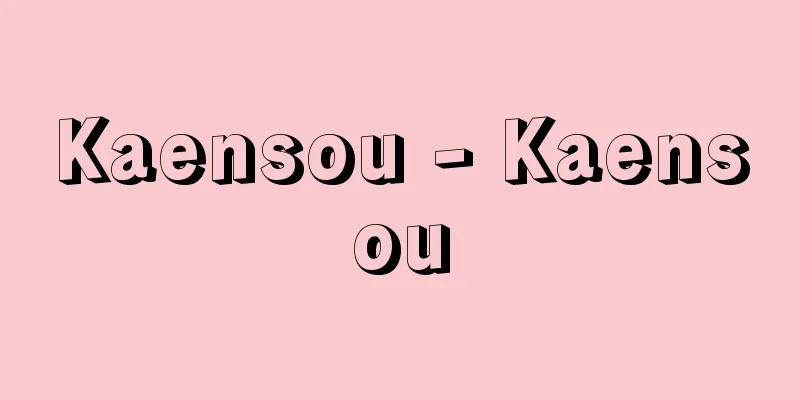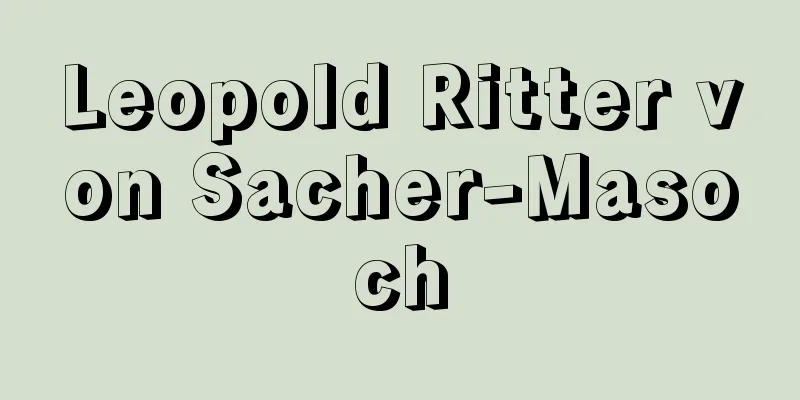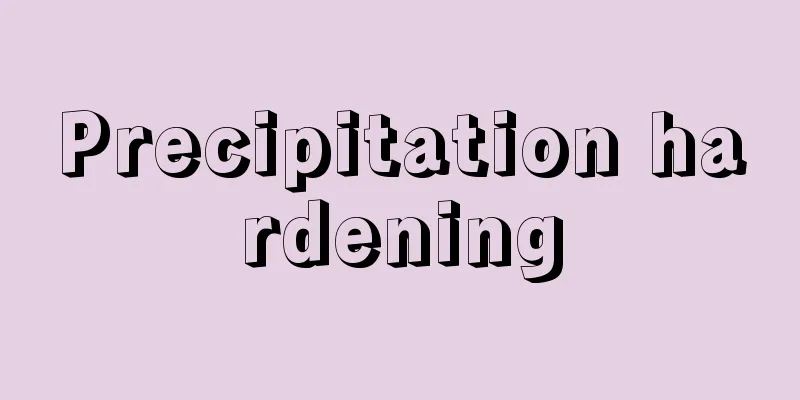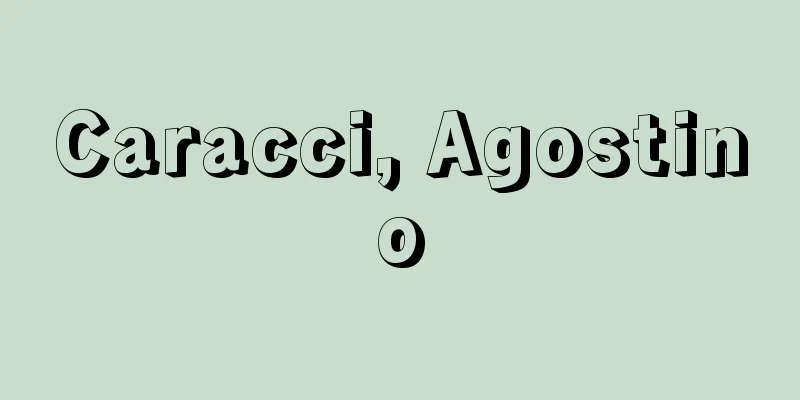Italian Music - Italian Music

|
In the 2000-year history of Western art music, Italians have always contributed greatly to its development and held the lead for a long time. Italians have always been good at "singing" and "composing melodies," and the art music they were involved in was mainly vocal. From the late 16th century to the 17th century, instrumental music, which is the prototype of modern instrumental music, became independent from vocal music, but this independence would not have been possible without Italian music. At that time, large-format vocal music such as opera and oratorio was born in Italy, and for more than 300 years after that, they became the most important art not only in Western music but also in modern Western society. On the other hand, before the 16th century, the concept of pure instrumental music was weak in Western music itself, and almost all music was vocal, so it goes without saying that Italian music, which has "well-sung melodies," played a significant role. [Toshiaki Kurosaka] historymiddle agesAmbrosian ChantAmbrose (c. 339-397), Bishop of Milan, introduced music into the liturgy following the example of the early Christian church in the East. The music was plainchant, commonly called Ambrosian chant (cantus ambrosianus). Ambrosian chant consists of responsorial psalmody, sung alternately by soloists and the congregation, and hymnus, sung in verse with a straightforward melody. The former often has melismatic melodies, while the latter often has syllabic melodies with one note assigned to each syllable. [Toshiaki Kurosaka] Gregorian ChantIn the Western Church, chants were introduced into the liturgy, but they took on various forms depending on the region. It was Pope Gregory I (c. 540-604) who tried to unify the regional differences. He unified the lyrics and melodies of chants, and succeeded in spreading them to the regions through church musicians trained at the Schola Cantorum (singer's school). As a result, liturgical chants in the Roman Catholic Church came to be widely known as Gregorian chant. There are three types of melodies in Gregorian chant: syllable type (a melody with a syllabic structure), neumatic type (a type between syllable type and melisma type), and melisma type (a melody with a melisma structure). To sing Christian teachings, a melody with a syllable structure is preferable because it is easy to understand the meaning of the lyrics, but the Italian sensibility, which prefers flowing melodies, naturally demanded a melisma type. This conflict between "elements that emphasize words" and "elements that are dominated by the senses," between religiosity and artistry, has continued throughout the history of the Catholic Church. [Toshiaki Kurosaka] Liturgical and mystery dramaAround the 11th century, attempts to dramatize matters related to the Passion and the Resurrection became more common. These plays based on Latin poetry often had the characters actually acting out the lines while reciting a monophonic melody. Today, this type of medieval drama from around the 11th to 13th centuries is called liturgical drama. As a form of drama, liturgical drama requires that the meaning of the lyrics be understood, but because its origins lie in tropes (the interjections of liturgical chants), the melodies were in the neumatic type, which was a flowing melody for the time. This resulted in the creation of melodies that were easy to sing while also understanding the content of the lyrics. Later, liturgical dramas became increasingly large-scale and had elaborate costumes. The content was not limited to the Passion and Resurrection, but also included stories from the Old Testament and the Apocrypha. In the late Middle Ages (14th to 16th centuries), this type of drama was called a mystery play. [Toshiaki Kurosaka] Lauda (around the 13th century)At the beginning of the 13th century, Saint Francis of Assisi was engaged in religious activities in central Italy. This activity gave birth to a form of monophonic religious song called lauda (meaning praise of God). Many lauda were written in Tuscany and Umbria, and their lyrics were written in the vernacular of central Italy. Joy and sorrow are sung naturally and lyrically through simple melodies that are free of technical skill, and one can see the realization of the unity of poetry and music, which is the essence of Italian music. The form of lauda poetry and music shows the influence of the virelai (a type of song) established by the medieval French minstrel Troubert. There were minstrel poets called trovatore in 13th century Italy, but no songs they created survive. [Toshiaki Kurosaka] Madrigals, ballatas and caccia (c. 14th century)Italy initially lagged behind France in the development of polyphony in music, but around the 14th century it began to produce its own excellent polyphonic music. Typical musical forms are the madrigale, the ballata, and the caccia. All of these are secular songs in two or three voices, and were popular in the royal courts of northern and central Italy. The madrigale and the ballata are musical compositions set to poems of the same name, and in most cases only the highest voice was sung, while the lower voices were played on instruments. For this reason, care was taken to give melodic dominance to the upper voices that sang the lyrics, making them easy to understand. However, the melodies are generally melismatic, very detailed, and last for a long time. Caccia consists of two solo parts in a strict canon of equal length, and an independent tenor part with long notes in the harmonic supporting instrument. Caccia usually has a section called ritornello, which was also often composed as an independent canon. Caccia is the most technically demanding genre of medieval Italian music, and its technique even gives it a name that describes the genre itself, so it can be said to be a musically superior piece. As a representative composer of this period, we cannot forget Francesco Landini, who composed many ballatas. Others who are known include Jacopo da Bolognia and Giovanni da Cascia, who were active in the mid-14th century. Italian music of this period is called Trecento (meaning the 1300s), while contemporary French music is called Ars Nova. [Toshiaki Kurosaka] RenaissanceClassical counterpoint was perfected between the 15th and 16th centuries, and church music using this technique reached its heyday. However, the center of creative activity was always Burgundy and Flanders, north of the Alps, and Italy was extremely stagnant. However, from around the beginning of the 16th century, masters of the Flemish school such as Josquin des Prez and Willaert visited Italy, and gradually cutting-edge music was brought to Italy. As a result, around the second quarter of the 16th century, music began to flourish in various courts, albeit belatedly. [Toshiaki Kurosaka] The rise of the 16th centuryUnlike France and Spain, which were trying to establish absolutist states, 16th-century Italy had not yet achieved national unity. As a result, regional characteristics were strongly reflected in the music, and unique music developed especially in Rome, Venice, and Florence. (1) Roman School From the second quarter of the 16th century onwards, music in Rome, the centre of the Counter-Reformation, was marked by a strong tendency to adhere to the ideals inspired by the Counter-Reformation. Palestrina was a composer who composed a great deal of sacred music in line with the basic principles of the Roman Catholic Church. His works based on modal counterpoint are called the Palestrina style, and they represent the pinnacle of church modal music since the Middle Ages. (2) Venetian School Musical activity in Venice was centered around St. Mark's Basilica. Willaert focused on the structure of the cathedral, with its two organs and two choirs, and pursued double choral music. Later, the number of choral bodies increased, and a technique called cori spezzati (composite singing) developed. Many grand choral pieces using this combination singing were composed by Andrea Gabrieli and his nephew Giovanni Gabrieli. Also, unlike the Roman School, the Venetian School introduced a variety of instruments to sacred music, producing a gorgeous sound. (3) Florentine School While religious music was the main focus in Rome and Venice, secular music, including madrigals, flourished in Florence. These madrigals differ in content from the aforementioned madrigals that appeared in the 14th century. Around 1500, secular songs called frottola were popular in the courts of northern Italy. Frottola was a type of music with a melody in the highest voice and a chord in the lower voice that supported it. In the first half of the 16th century, Flemish composers created madrigals based on frottola. The lyrics of these madrigals were based on poems of high artistic value, such as Petrarch's sonnets, and the music attempted to depict the content of the poem by combining synchrastic rhythms with the contrapuntal writing style of the Flemish school. In the second half of the 16th century, madrigals began to be written by Italian composers, and reached their peak with Marenzio and others. [Toshiaki Kurosaka] Baroque periodThe Birth of Opera (17th Century)Around 1580, a circle of humanists called the Camerata (meaning the Fellowship) was formed in Florence. The Camerata also included musicians, and one of their goals was to revive ancient Greek drama. They believed that ancient drama was composed of songs, and so they came up with a new form of drama, opera, that was written with music. The oldest surviving opera is said to be Euridice, composed by Peri with a libretto by Ottavio Rinuccini (1562-1621), which premiered in Florence in 1600 (some of the music was composed by Caccini). However, this work was composed entirely in recitation, a style called "stile rapresentativo" (dramatic style), which was born from the theoretical research of the Camerata, and cannot be said to be musically complete. The first opera in history to overcome these shortcomings and become the foundation of later operas was Orfeo, composed by Monteverdi and based on a libretto by Alessandro Striggio (1573-1630), which premiered in Mantua in 1607. The opera that was born in this way, and under Monteverdi's hand, took a step towards modern opera. [Toshiaki Kurosaka] Neapolitan opera (late 17th and 18th centuries)Opera in the first half of the 17th century was centered in Venice, where Monteverdi was active, but in the second half of the 17th century, works created in Naples became the standard for Italian opera. This type of opera is called the Neapolitan School, and remained popular for over 100 years. In Neapolitan School opera, the beauty of the singers' voices and the virtuosity of their singing were the focus of interest, and the coloratura melodies sung by castrati in particular never ceased to captivate audiences. In the 17th century, Neapolitan School opera was a two-act opera based on myths and heroic tales, but in the 18th century, a separate comic opera began to be inserted between the acts. This comic opera gradually became independent, and while traditional opera was called opera seria, it came to be called opera buffa. [Toshiaki Kurosaka] Oratorios and cantatas (17th century and early 18th century)In the Baroque period, solo singing accompanied by chords and strings became mainstream in vocal music. This singing style generally tends to be recitation, but it was Caccini who made it syllabic yet melodic. In the 17th century, this type of singing was utilized to create not only operas, but also oratorios and cantatas, which were theatrical vocal genres. (1) Oratorio In the second half of the 16th century, the Society of Oratorio, founded by Filippo Neri (1515-95), had the custom of singing lauda in addition to offering prayers. By the end of the century, the singing was no longer limited to lauda, but had expanded to include dialogues and dramas. This type of music came to be called oratorio, after the name of the society. Around 1600, some works, such as Cavalieri's Dramato das Soul e corpus, were performed with stage sets, costumes, and acting, but these should be classified as religious musical dramas and differ in many ways from later oratorios. Works such as Jehuta by Calissimi in the mid-17th century became a typical example of the modern oratorio. (2) Cantata In the first half of the 17th century, vocal music that was not as large as opera or oratorio was generally called cantata. Cantatas gradually took on a more formal form, and by the middle of the 17th century, although not as large as opera or oratorio, they had become vocal music that similarly consisted of short stories in arias and recitatives. From then on, cantatas were mainly popular in the courts of the nobility, and were sung mainly about secular matters. Alessandro Scarlatti composed over 600 cantatas, reaching the pinnacle of this musical genre. Some cantatas dealt with religious themes, which led to the German church cantatas written by J.S. Bach and others in the 18th century and later. [Toshiaki Kurosaka] Independence of instrumental music (first half of the 17th century)In Western art music, there was almost no music that was only for instrumental performance until the 17th century. However, at the beginning of the 16th century, French chansons were brought to Italy, and they were arranged for instruments and performed. These were called canzona francese. The technique of arranging vocal music for instruments gradually spread to all vocal music, and in the second half of the 16th century, music arranged for instruments, called canzona da sonare, became widely popular. However, the starting point of the composition of canzona da sonare was still vocal music, and it cannot be said to be instrumental music in the strict sense. However, from the beginning of the 17th century, music was composed with the premise that it would be performed on instruments. This is the birth of pure instrumental music that was independent from vocal music. Such instrumental music was named sonata, which comes from the Italian word sonare, which means "to play (on an instrument)." [Toshiaki Kurosaka] Church sonatas and chamber sonatas (late 17th century)Instrumental music, which became independent from vocal music in the early 17th century, gradually took shape throughout the first half of the century, and by the middle of the century, two musical genres were born: the church sonata (sonata da chiesa) and the chamber sonata (sonata da camera). The church sonata was chamber music performed during mass and the Divine Office, and is composed of four contrasting sections: slow-fast-slow-fast. In contrast, the chamber sonata was a lighter chamber music performed at court banquets and balls, and was a suite centered around three or four dances. Corelli contributed the most to the establishment and development of these sonatas. In addition, both of these sonatas were performed in the form of a trio sonata, consisting of two melodic instruments and a basso continuo. In the 18th century, the terms church sonata and chamber sonata gradually fell out of use, and the former came to be known as trio sonata and the latter as dance suite. [Toshiaki Kurosaka] Concertos (17th century and early 18th century)The Venetian school's technique of mixed singing was also applied to instrumental music from the 17th century onwards, and instrumental music was created by contrasting two sound sources. At first, it consisted of a solo group consisting of three or more instruments and an ensemble group mainly consisting of string ensembles, and was familiarly called a concerto grosso (Corelli is also a representative composer of this type of concerto grosso). After 1700, the principle of contrasting two sound sources gradually changed to music that contrasts solo and ensemble. This type of concerto is called a solo concerto. Torelli played a major role in its creation, but it is no exaggeration to say that it was established by Vivaldi. [Toshiaki Kurosaka] Classical period (second half of the 18th century)From the 17th to the 18th century, many new vocal and instrumental music genres were created, almost all of which were created by Italians. However, from the middle of the 18th century, the center of musical creation shifted to Germany, and instrumental music entered its heyday. Although Neapolitan opera was still enjoyed in Italy, it was impossible to avoid a rut, and musical activity was inevitably heading toward stagnation. [Toshiaki Kurosaka] Romantic periodEarly Romantic Opera (first half of the 19th century)In the 19th century, a new style of opera began to be created, replacing the Neapolitan School operas that had relied on the voices and techniques of singers. The first of these was Rossini, followed by Bellini and Donizetti. In their operas, the intertwining of the characters' emotions and psychological changes became important elements of the work, and they were depicted not only by vocals but also by the orchestra. The arias sung in the operas were constructed by contrasting the cavatina in the first half with the more technical and faster cabaletta in the second half, which was not only a highlight for the singers but also suited to expressing the characters' feelings. The operas as a whole were structured in the form of opera numbers, which continued the tradition of the Neapolitan School and linked individual arias, duets, choruses, etc. However, as the arias gradually expanded, the number of songs (=numbers) decreased, suggesting a trend toward a continuous style of opera. [Toshiaki Kurosaka] High Romantic opera (mid to late 19th century)Italian Romantic opera entered a mature stage around 1840, and Verdi was the composer who singlehandedly supported its development for about half a century after that. It happened to be during the final stage of the Risorgimento (Italian unification), and Verdi's powerful choruses became beloved songs that inspired Italian patriotism. In particular, the chorus "Fly, my thoughts, on golden wings" sung in the opera "Nabucco" became so familiar that it became Italy's second national anthem. Verdi also took his subjects from more familiar sources, and expressed theatrical and tense developments through singing melodies and dramatic orchestral techniques. Such characterization of the characters and exploration of humanity show that his operas are truly based on Romanticism. [Toshiaki Kurosaka] Late Romantic Opera (Late 19th Century - Early 20th Century)Towards the end of the 19th century, the subject matter of operas became more and more human, and even actual events were taken up. This type of opera is called verismo opera, and typical examples can be seen in the works of Leoncavallo and Mascagni. Puccini was also a composer of verismo opera, but rather than vividly depicting real life, he focused on transforming it into a lyrical musical world. As a result, Puccini's operas generally show the characteristics of late romanticism, with their sweet melodies. In any case, opera, which now contained such a sense of everyday life, was unable to be compatible with the new music of the 20th century, and went into rapid decline. [Toshiaki Kurosaka] Contemporary Italian MusicIn the 20th century, there was a demand for music that would abandon tonality, which had been the foundation of Western music since around 1600. However, after the end of World War I, neoclassicism, which sought to return to classical and baroque music, emerged, and in Italy there was a strong tendency to prefer neoclassical music. Respighi composed late romantic music in the first half of his career, but in the second half he composed works that represent neoclassicism. However, in the second half of the 20th century, music with new sound structures began to be composed in Italy as well. After World War II, Nono left behind works that made full use of musique seriale, the most avant-garde compositional technique at the time, and in the 1960s he also became interested in tape music. Berio also pioneered the field of electronic music by establishing an electronic music studio at the Italian Broadcasting Corporation in 1955, and from the 1960s onwards he sought new sounds through works that introduced aleatorics. [Toshiaki Kurosaka] FeaturesItalian music, as seen in vocal music that has been at the core of its history, is characterized by its ability to understand the meaning of lyrics and to have graceful, flowing melodies. Throughout the history of Italian music, the pursuit of understanding words and the pursuit of beautiful, flowing melodies have constantly struggled to merge. This is not limited to vocal music, but can also be seen in instrumental music, where lyrical melodies always dominate the compositions. The "Italian lyricism" that was born in this way has become one of the unchanging aesthetic principles of Italian music as a whole. This unchanging principle is the essence that applies to all Italian music, not only art music, but also folk songs and modern popular music. The most notable example is canzone (canzone napolitana), which has been popular mainly in Naples since the second half of the 19th century. This vocal music has lyrics full of love and overflowing passion, sung to simple chord accompaniment. The content is therefore easy to understand, and the melody is very elegant, inheriting the tradition of art music. In this way, canzone, like art music, is also characterized by the unique Italian lyricism. Italian music continues to be widely loved around the world today because of this "Italian lyricism." [Toshiaki Kurosaka] "The Golden Age of Italian Opera: From Rossini to Puccini" by William Weaver, translated by Mitsuo Ohira (1998, Ongaku No Tomosha)" ▽ "Italian Opera, Volumes 1 and 2 (1998), edited and published by Ongaku No Tomosha" ▽ "A History of Italian Music" by Nannie Bridgeman, translated by Shinji Tanamura (Hakusuisha Bunko Quessais-je)" [References] | | | | | | | | | |Calisimi| | | | | | | | | | | | | | | | | | | | | | | | | | | | | | | | | | | | | | | | | | | | | | | | |Source: Shogakukan Encyclopedia Nipponica About Encyclopedia Nipponica Information | Legend |
|
2000年に及ぶ西洋芸術音楽の歴史のなかで、イタリア人はつねにその展開に大きく貢献し、かなり長期にわたって主導権を握っていた。イタリア人は、元来「歌うこと」「旋律をつくること」が得意であり、彼らの関与する芸術音楽も声楽が中心であった。16世紀後半から17世紀にかけて現在の器楽曲の原型となる器楽が声楽から自立したが、その自立もイタリア音楽なくしてはありえなかった。そのころイタリアでは、オペラやオラトリオといった大形式の声楽曲が生まれ、それらはその後300年以上の間、西洋音楽のみならず西洋近代社会においてもっとも重要な芸術となった。一方、16世紀以前は西洋音楽自体に純粋器楽曲の概念が希薄であり、ほとんどすべての楽曲が声楽曲であったために、「よく歌う旋律」をもつイタリア音楽の果たす役割がかなり大きかったことはいうまでもない。 [黒坂俊昭] 歴史中世アンブロジオ聖歌ミラノの司教アンブロシウス(339ころ―397)は、東方の初期キリスト教会にならって典礼に音楽を導入した。その音楽は単旋律聖歌plainchantであり、一般にアンブロジオ聖歌(アンブロシウス聖歌)cantus ambrosianusとよばれる。アンブロジオ聖歌には、独唱者と会衆が交互に歌う応答詩篇(しへん)唱responsorial psalmodyと、韻文の歌詞を直截(ちょくせつ)的な旋律で歌い上げる賛歌hymnusとがある。前者にはメリスマ的な性格をもつ旋律が多く、後者には1音節に1音があてられた音節的な旋律が多い。 [黒坂俊昭] グレゴリオ聖歌西方教会では典礼の際に聖歌が導入されるようになったが、地域によってさまざまな様相を呈していた。この地域による差異を統一しようとしたのが、ローマ教皇グレゴリウス1世(540ころ―604)である。グレゴリウス1世は、聖歌の歌詞と旋律を統一し、スコラ・カントルムschola cantorum(歌手の学校)で訓練した教会音楽家を通じて、地方に至るまでその聖歌を定着させることに成功した。こうした成果によって、ローマ・カトリック教会の典礼聖歌は広くグレゴリオ聖歌(グレゴリウス聖歌)とよばれるようになる。グレゴリオ聖歌の旋律には、シラブル型(音節的な旋律)、ネウマ型(シラブル型とメリスマ型の中間型)、メリスマ型(メリスマ的な旋律)の三つのタイプがある。キリスト教の教えを歌うには、旋律は歌詞の意味内容を理解しやすいシラブル型が好ましいが、流麗な旋律を好むイタリア人の感性はおのずとメリスマ型を要求した。この「ことばを重視する要素」と「感覚に支配される要素」、宗教性と芸術性の葛藤(かっとう)は、カトリック教会の歴史のなかで絶えず続いた。 [黒坂俊昭] 典礼劇と神秘劇11世紀ごろになると、受難や復活に関する事柄を劇に表現しようとする試みが盛んになった。このラテン語の詩による演劇は、ときとして登場人物を実際に演じながらセリフを単旋律の朗唱で歌う場合が多かった。今日、このような11~13世紀ごろの中世演劇を典礼劇とよぶ。典礼劇は演劇である以上、歌詞の意味が理解されなければならないが、その由来がトロープス(典礼聖歌の挿入部分)にあることなどから、旋律はネウマ型であり、当時としてはよく流れる旋律であった。ここに、歌詞の内容が理解されつつ、よく歌う旋律が生み出された。 その後、典礼劇はしだいに大がかりな舞台となり、衣装も凝ったものとなっていった。内容も受難と復活に限らず、『旧約聖書』や聖書外典の物語まで扱われるようになる。中世後期(14~16世紀)のこの種の演劇は神秘劇とよばれる。 [黒坂俊昭] ラウダ(13世紀ごろ)13世紀の初め、中部イタリアではアッシジの聖フランチェスコが宗教活動を行っていた。この活動と結び付いて生まれたのがラウダlauda(神を称えるの意)とよばれる単旋律の宗教歌である。ラウダは、トスカナ地方やウンブリア地方で数多くつくられ、その歌詞は中部イタリアの俗語で書かれていた。技巧を排した素朴な旋律によって、喜びや悲しみが自然かつ叙情的に歌いあげられ、そこにイタリア音楽の本質である詩と音楽の統一の実現をみることができる。ラウダの詩および音楽の形式には、フランスの中世吟遊詩人トルーベールが定めていたビルレーvirelai(歌曲定型の一つ)の影響がみられる。なお、13世紀イタリアにトロバトーレtrovatoreとよばれる吟遊詩人たちがいたが、彼らの創作した歌は現存していない。 [黒坂俊昭] マドリガーレ、バッラータ、カッチャ(14世紀ごろ)音楽の多声化に関して、当初イタリアはフランスに遅れをとっていたが、14世紀に入るころから独自の優れた多声音楽をつくりだすようになった。その代表的な楽種がマドリガーレmadrigale、バッラータballata、カッチャcacciaである。いずれも2~3声の世俗歌曲で、北イタリアから中部イタリアにかけての宮廷で盛んに歌われた。マドリガーレとバッラータは、同名の詩に付曲した音楽作品で、最上声だけが歌われ下声は楽器で奏されることが多かった。そのため、歌詞を歌う上声部に旋律的な優位を与える配慮がなされており、歌詞の理解が容易であった。しかしその旋律は概してメリスマ的であり、非常に細かくかつ長く続く。 カッチャは、厳格な同度のカノンをなす二つの独唱声部と、和声的な支えとなる楽器による長い音価の独立したテノール声部とからなっている。カッチャには通例リトルネッロとよばれる部分がついているが、それもまた独立したカノンとして作曲されることが多かった。カッチャは中世イタリア音楽のなかで作曲上もっとも技巧的な楽種であり、その技巧が楽種そのものを表す名称とさえなっている、音楽優位の楽曲であるといえる。 この時代の代表的作曲家としては、とりわけバッラータを数多く作曲したフランチェスコ・ランディーニを忘れることができない。そのほかには、14世紀中葉に活躍したヤーコポ・ダ・ボローニャJacopo da Bolognia、ジョバンニ・ダ・カーシャGiovanni da Casciaらが知られている。なお、この時代のイタリア音楽は、同時代のフランス音楽がアルス・ノバとよばれるのに対し、トレチェントTrecento(1300年代の意)とよばれる。 [黒坂俊昭] ルネサンス期15世紀から16世紀にかけては古典対位法が完成され、その技法による教会音楽が全盛期を迎えた。しかしそれらの創作活動の中心は、つねにアルプス以北のブルゴーニュやフランドルにあって、イタリアは不振を極めていた。ところが、16世紀に入ったころから、ジョスカン・デ・プレやウィラールトといったフランドル楽派の大家がイタリアを訪れ、しだいにイタリアにも最先端の音楽がもたらされるようになった。その結果、16世紀の第2四半世紀あたりから、遅ればせながら各地の宮廷で音楽の華が開くこととなる。 [黒坂俊昭] 16世紀の隆盛16世紀のイタリアは、絶対主義国家が確立しようとしていたフランスやスペインとは異なり、国家的統一が果たされていなかった。そのため音楽にも地域色が強く反映され、とくにローマ、ベネチア、フィレンツェに独自の音楽が発展した。 (1)ローマ楽派 16世紀の第2四半世紀以降、反宗教改革運動の中心地であったローマの音楽には、反宗教改革の雰囲気によって鼓吹された理念を遵守しようとする性格が色濃く表れた。パレストリーナこそは、このローマ・カトリック教会の基本方針に沿って、数多くの宗教音楽を作曲した作曲家である。彼の旋法的対位法に基づく作品群はパレストリーナ様式とよばれ、ここに中世以来の教会旋法による音楽の頂点をみることができる。 (2)ベネチア楽派 ベネチアの音楽活動はサン・マルコ大聖堂を中心に展開された。ウィラールトは、2台のオルガンと二つの聖歌隊が配された大聖堂の構造に着目し、二重合唱の音楽を追究した。その後、合唱体の数は増加し、複合唱cori spezzatiとよばれる手法が発展する。その複合唱による壮大な合唱曲は、アンドレア・ガブリエリと、その甥(おい)ジョバンニ・ガブリエリによって数多く作曲された。またベネチア楽派ではローマ楽派と異なり、宗教音楽にさまざまな楽器が導入され、華やかな響きが奏でられた。 (3)フィレンツェ楽派 宗教音楽が中心のローマとベネチアに対し、フィレンツェではマドリガーレをはじめとする世俗音楽が花を咲かせた。このマドリガーレは、14世紀に登場した前述のマドリガーレとは内容的に異なる。1500年ごろ、北イタリアの宮廷では、フロットラfrottolaとよばれる世俗歌が流行していた。フロットラは、旋律が最上声に置かれ、下声部がそれを支える和音を形成する同時リズムの音楽であった。16世紀前半、フランドル出身の作曲家たちはこのフロットラを基にマドリガーレをつくりだした。このマドリガーレの歌詞には、ペトラルカのソネットのような芸術的価値の高い詩が用いられ、音楽は同時リズムとフランドル楽派の対位法的書法との組合せによって、その詩の内容を描写しようとした。16世紀後半になると、マドリガーレはイタリア人作曲家によって書かれるようになり、マレンツィオらによって最盛期を迎える。 [黒坂俊昭] バロック時代オペラの誕生(17世紀)1580年ごろからフィレンツェでは、カメラータCamerata(仲間の意)と称する人文主義者たちのサークルがつくられていた。カメラータには音楽家も加わっており、一つの目標として古代ギリシア劇の復興が目ざされていた。彼らは古代演劇が歌で構成されていたものと信じ、音楽によって綴(つづ)られる新しい演劇、すなわちオペラが誕生することとなる。現存する最古のオペラは、1600年にフィレンツェで初演されたリヌッチーニOttavio Rinuccini(1562―1621)の台本によるペーリ作曲『エウリディーチェ』とされている(曲の一部はカッチーニ作曲)。しかしこの作品は、全曲を通してカメラータの理論的研究から生まれた「スティレ・ラプレゼンタティーボ(劇的様式)」とよばれる朗唱によって作曲され、音楽的に完成されているとはいえない。こうした短所を克服し、後のオペラの礎(いしずえ)となった実質的に史上最初のオペラは、1607年にマントバで初演されたストリッジョAlessandro Striggio(1573―1630)の台本によるモンテベルディ作曲『オルフェオ』である。こうして誕生したオペラは、モンテベルディの手によって近代的なオペラへと向かうことになる。 [黒坂俊昭] ナポリ楽派のオペラ(17世紀後半・18世紀)17世紀前半のオペラは、モンテベルディが活躍したベネチアを中心に展開されたが、17世紀後半にはナポリでつくられる作品がイタリア・オペラの規範となった。このオペラはナポリ楽派とよばれ、以後100年余りの間、人気を持続する。ナポリ楽派のオペラでは、歌手の声の美しさと歌唱の名人芸的技巧が人々の興味の的であり、とりわけカストラートが歌うコロラトゥーラの旋律は聴衆を魅了してやまなかった。ナポリ楽派のオペラは、17世紀には神話や英雄伝などを題材とした2幕仕立てのオペラであったが、18世紀に入るとその幕間(まくあい)に別の喜歌劇が挿入されるようになった。この喜歌劇はしだいに独立し、従来のオペラがオペラ・セリアopera seriaとよばれるのに対し、オペラ・ブッファとよばれるようになる。 [黒坂俊昭] オラトリオとカンタータ(17世紀・18世紀前半)バロック期に入ると、声楽曲は和弦伴奏を伴う独唱が主流となる。この歌唱法は概して朗唱になりがちであるが、それを音節的でありながら旋律的に仕立てあげたのがカッチーニであった。17世紀にはこのような歌唱の特徴が生かされ、オペラのみならず、オラトリオやカンタータといった演劇性をもつ楽種が声楽に生み出されることとなる。 (1)オラトリオ 16世紀後半、ネーリFilippo Neri(1515―95)によって結成されたオラトリオ会では、祈りを捧げるとともにラウダを歌う慣習があった。その歌は、世紀末にはラウダに限られることなく、対話形式、劇形式へと規模を拡大していった。このような音楽は、会の名称をとってオラトリオとよばれるようになる。1600年ごろには、カバリエリの『魂と肉体の劇』のように舞台装置、衣装、演技などを伴って上演されるものもあったが、これらは宗教音楽劇と類されるべきであり、後のオラトリオとは異なる部分が多い。17世紀中葉のカリッシミによる『イェフテ』などが近代的なオラトリオの典型となった。 (2)カンタータ 17世紀前半、オペラやオラトリオのような大きな形式でない声楽曲は、総じてカンタータとよばれた。カンタータはしだいに形式を整えていき、17世紀なかばには、オペラやオラトリオほど大きくはないものの、同様に短い物語をアリアやレチタティーボで構成する声楽曲となった。以後、カンタータはおもに貴族の宮廷でもてはやされ、もっぱら世俗的な内容が歌われた。アレッサンドロ・スカルラッティは600を超えるカンタータを作曲し、この楽種の一つの頂点を極めている。宗教的な題材を扱うカンタータもあり、それが18世紀以降のJ・S・バッハらによるドイツの教会カンタータへとつながってゆく。 [黒坂俊昭] 器楽の自立(17世紀前半)西洋芸術音楽では、17世紀に至るまで楽器演奏だけの音楽はほとんど存在しなかった。ところが16世紀の初め、フランスのシャンソンがイタリアにもたらされ、それが楽器のために編曲されて演奏されるようになった。それらはカンツォーナ・フランチェーゼcanzona franceseとよばれる。声楽を楽器用に編曲する手法は、しだいにあらゆる声楽曲に向けられるようになり、16世紀後半にはカンツォーナ・ダ・ソナーレcanzona da sonareとよばれる、楽器のために編曲された音楽が広く流行した。しかし、カンツォーナ・ダ・ソナーレの作曲の出発点はなお声楽曲にあり、厳密な意味での器楽曲とはいえない。ところが17世紀に入るころから、作曲の当初から楽器で演奏されることを前提とした音楽が作曲されるようになった。ここに声楽から自立した純粋器楽曲の誕生をみることができる。こうした器楽曲は「(楽器を)奏でる」を意味するイタリア語のソナーレsonareに由来し、ソナタと名づけられた。 [黒坂俊昭] 教会ソナタ・室内ソナタ(17世紀後半)17世紀初頭に声楽から自立した器楽は、17世紀前半を通じてしだいに形式が整えられていき、世紀なかばには教会ソナタsonata da chiesaと室内ソナタsonata da cameraという二つの楽種が生まれた。教会ソナタは、ミサや聖務日課の際に演奏される室内楽で、緩―急―緩―急といった対照的な四つの部分から構成される。それに対して、室内ソナタは宮廷の晩餐(ばんさん)会や舞踏会などで演奏される軽い内容の室内楽であり、3~4の舞曲を中心とした組曲であった。これらのソナタの確立と発展にはコレッリがもっとも貢献した。また、この二つのソナタはいずれも、二つの旋律楽器と通奏低音からなるトリオ・ソナタの形態で演奏された。18世紀に入ると教会ソナタや室内ソナタといった用語は徐々に用いられなくなり、前者はトリオ・ソナタ、後者は舞曲組曲という名称で広くよばれるようになっていく。 [黒坂俊昭] 協奏曲(17世紀・18世紀前半)ベネチア楽派の複合唱の手法は、17世紀以降器楽にも生かされ、二つの音源の対比による器楽曲がつくられるようになった。最初、それは三つ以上の楽器からなる独奏群と弦楽アンサンブルを主体とする合奏群とから構成され、合奏協奏曲(コンチェルト・グロッソconcerto grosso)という名で親しまれていた(コレッリはこの合奏協奏曲の代表的作曲家でもある)。1700年を越えたころから、二つの音源を対比する原理は、しだいに独奏と総奏の対照による音楽へとかわっていった。この協奏曲は独奏協奏曲(ソロ・コンチェルトsolo concerto)とよばれる。その誕生にはトレッリの功績が大きいが、ビバルディによって確立されたといっても過言ではない。 [黒坂俊昭] 古典派時代(18世紀後半)17世紀から18世紀にかけて、声楽と器楽に数多くの新しい楽種が生み出されたが、これらはほとんどすべてがイタリア人の手によって成し遂げられた。しかし、18世紀なかばから音楽創作の中心はドイツへと移り、器楽が全盛を迎える時代となる。イタリアでは、依然としてナポリ楽派のオペラが楽しまれていたが、マンネリ化を避けることができず、音楽活動は停滞へと向かっていかざるをえなかった。 [黒坂俊昭] ロマン派時代初期ロマン派オペラ(19世紀前半)19世紀に入ると、それまでの歌手の声や技巧に頼っていたナポリ楽派のオペラにかわり、新しいスタイルのオペラがつくられるようになる。その第一人者はロッシーニであり、ベッリーニとドニゼッティがそれに続いた。彼らのオペラでは、登場人物の感情の交錯や心理の推移などが作品を構成する重要な要素となり、それらが歌唱だけでなく管弦楽によっても描写されている。また、オペラで歌われるアリアは、前半のカバティーナと後半の技巧的なより速いテンポのカバレッタの対比によって組み立てられ、それが歌手の見せ場であるばかりでなく、登場人物の心情の表現に適したものとなっている。オペラ全体はナポリ楽派の伝統を引き継ぎ、個々のアリア、二重唱、合唱などをつなぐ番号オペラの形式で構成されている。しかし、しだいにおのおののアリアが拡大していくと同時に楽曲(=番号)の数が減少し、通作スタイルのオペラへと向かっていく傾向も暗示されている。 [黒坂俊昭] 盛期ロマン派オペラ(19世紀中盤~後半)イタリアのロマン派オペラは、1840年ごろから成熟した段階に入っていくが、ベルディこそは、その後約半世紀にわたってその発展を一人で支えた作曲家である。おりしもその時期はリソルジメント(イタリア統一)が最終局面を迎えている時期にあたり、ベルディの書いた力強い合唱はイタリア人の愛国心を鼓舞する愛唱歌となった。とりわけオペラ『ナブッコ』で歌われる合唱『行け、思いよ、黄金の翼に乗って』は、イタリアの第二の国歌として親しまれたほどである。またベルディは題材をより身近なものからとり、演劇的に緊張感のある展開を、歌うような旋律と管弦楽の劇的手法とによって表現した。このような登場人物の性格描写や人間性の追究は、彼のオペラがまさしくロマン主義を基盤としていることを物語っている。 [黒坂俊昭] 後期ロマン派オペラ(19世紀末・20世紀初頭)19世紀末になると、オペラの題材はますます人間味を帯び、実際に起こった事件さえも取り上げられるようになった。このようなオペラは、ベリズモ(真実主義)のオペラとよばれ、レオンカバッロやマスカーニの作品にその典型がみられる。プッチーニも基本的にはベリズモ・オペラの作曲家であったが、現実の生活を生々しく描写するよりも、それが抒情(じょじょう)的な音楽の世界へと転化されることに主眼が置かれていた。そのためプッチーニのオペラには、総じて甘美な旋律で綴られる後期ロマン派の特徴がみられる。いずれにしても、このように日常性をはらむこととなったオペラは、20世紀の新しい音楽と相いれることができず、急速に下降線をたどっていくこととなる。 [黒坂俊昭] 現代のイタリア音楽20世紀に入ると、1600年ごろより西洋音楽の基盤であり続けた調性を廃する音楽が求められるようになった。しかし一方では、第一次世界大戦が終結したあたりから、古典派音楽やバロック音楽へ回帰しようとする新古典主義も現れ、イタリアではこのような新古典主義音楽のほうを好む傾向が強かった。レスピーギは作曲活動の前半こそ後期ロマン派の音楽を書いていたが、後半は新古典主義を代表する作品を作曲した。ところが20世紀も後半にさしかかると、イタリアにも新しい音組織による音楽が作曲されるようになる。ノーノは第二次世界大戦後、当時もっとも前衛的な作曲技法であったミュージック・セリエルを駆使した作品を残し、1960年代にはテープ音楽へも傾倒した。またベリオは、1955年イタリア放送協会に電子音楽スタジオを設立して電子音楽の領域を開拓し、さらに1960年代以後は偶然性を導入した作品によって新しい響きを求めた。 [黒坂俊昭] 特徴イタリア音楽は、その歴史の中核をなす声楽にみられるように、歌詞の意味内容が理解でき、しかも華麗に流れる旋律がその最大の特徴である。ことばの理解を目ざす方向と流麗な旋律美を追究する方向とは、イタリア音楽の歴史を通じて絶えず融合を目ざしつつ葛藤を繰り広げてきた。それは声楽にとどまることなく、器楽においても抒情(じょじょう)的旋律がつねに楽曲の主体をなしているところにも見受けられる。こうして生み出された「イタリア的抒情性」こそは、イタリア音楽全体の美学的不変原理の一つとなっている。 この不変原理は、芸術音楽のみならず、民謡や現代のポピュラー音楽に至るまで、あらゆるイタリア音楽に適合する本質となっている。とりわけ19世紀後半よりナポリを中心に流行してきたカンツォーネ(カンツォーネ・ナポリターナ)は、そのもっとも顕著な例である。この声楽曲は、愛情に満ち激情がほとばしる歌詞が簡単な和弦的伴奏を伴って歌われる。したがって内容の理解が容易であり、しかもその旋律が芸術音楽の伝統を受け継いでいるため、非常に流麗である。このように、カンツォーネもまた、芸術音楽と同様、イタリア独特の抒情性がその本質となっている。イタリア音楽は、この「イタリア的抒情性」によって、いまなお世界中で広く愛好され続けている。 [黒坂俊昭] 『ウィリアム・ウィーバー著、大平光雄訳『イタリア・オペラの黄金時代――ロッシーニからプッチーニまで』(1998・音楽之友社)』▽『音楽之友社編・刊『イタリア・オペラ』上下(1998)』▽『ナニー・ブリッジマン著、店村新次訳『イタリア音楽史』(白水社文庫クセジュ)』 [参照項目] | | | | | | | | | | | | | | | | | | | | | | | | | | | | | | | | | | | | | | | | | | | | | | | | | | | | | | | | | | |出典 小学館 日本大百科全書(ニッポニカ)日本大百科全書(ニッポニカ)について 情報 | 凡例 |
<<: Italian Communist Party (English spelling) Partito Comunista Italiano
>>: Kingdom of Italy (Regno d'Italia)
Recommend
Shinanokinbai - Shinanokinbai
A perennial plant of the Ranunculaceae family (AP...
Safety rating - Anzenhyoka
… To determine whether the design of equipment wi...
《Kairokou》
…In the 20th century, American poet EA Robinson a...
Kawashima [town] - Kawashima
An old town in Hashima County, located on an islan...
Satin
It is also written as "shuzi". Unlike t...
Negroponte
…Population: 210,000 (1991). Also called Évvoia o...
Decoder - Decoder
A logic circuit with multiple inputs and multiple...
Shaoguan
A prefecture-level city in the north of Guangdong...
Oxide - Oxide
It refers to a compound that contains only oxygen...
Fumiyamada
The title of a Kyogen piece. Miscellaneous Kyogen...
Funktionspsychologie
In 1873, he became professor at the University of...
Iwayado - Iwayado
This is an old town area in the northern part of O...
Rye - rye
〘Noun〙 An annual or biennial plant of the grass fa...
Mustela eversmanni (English spelling) Mustela eversmanni
…They mate in March or April and give birth to 4 ...
Narrow gauge - Kyoki
〘 noun 〙 A railroad track whose gauge is narrower ...









